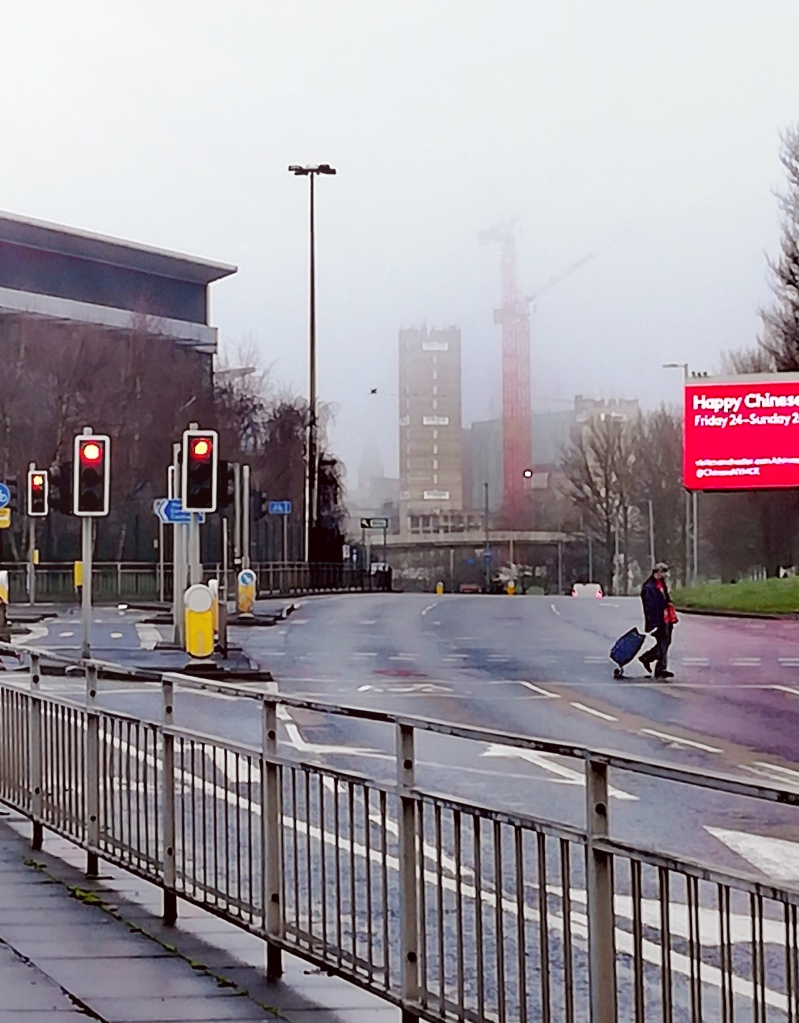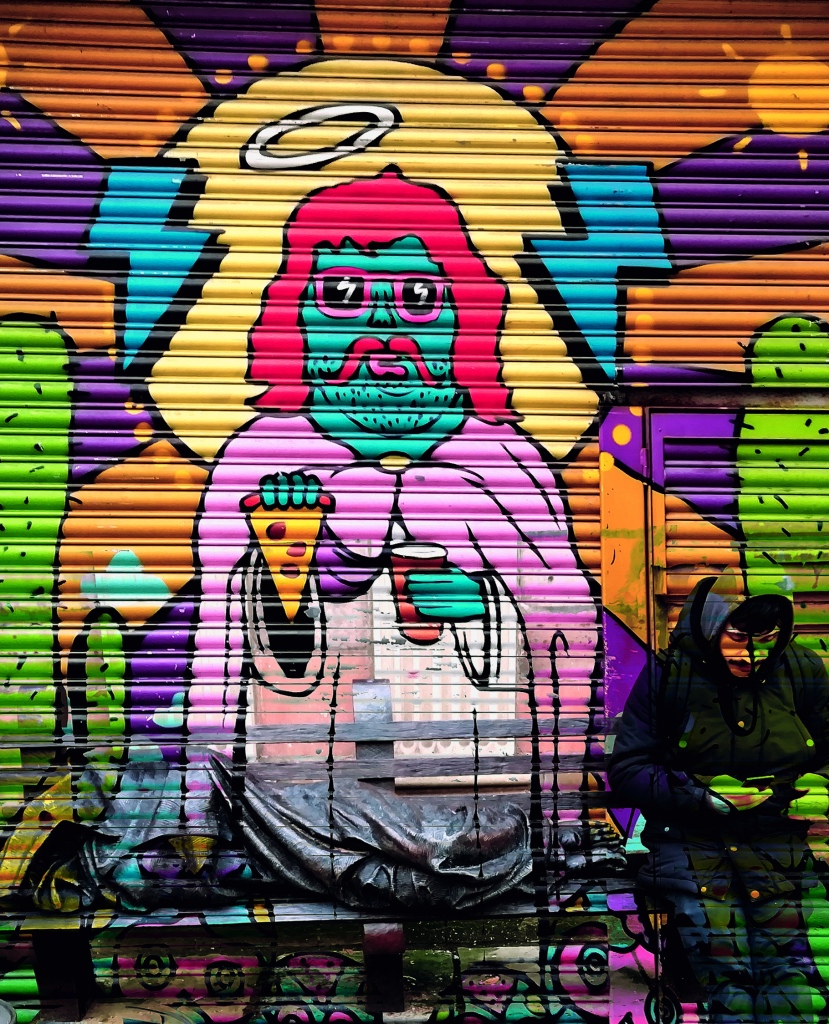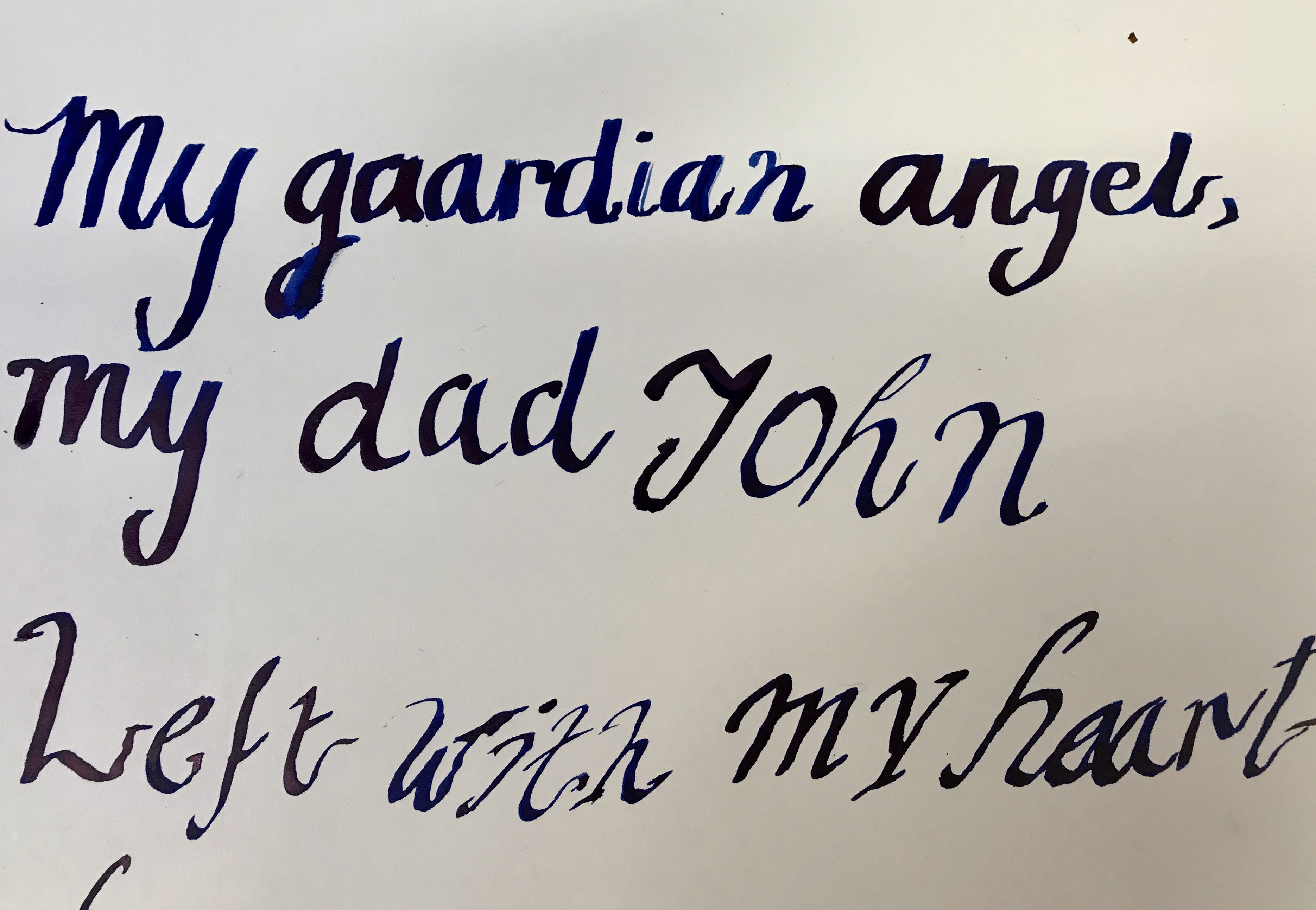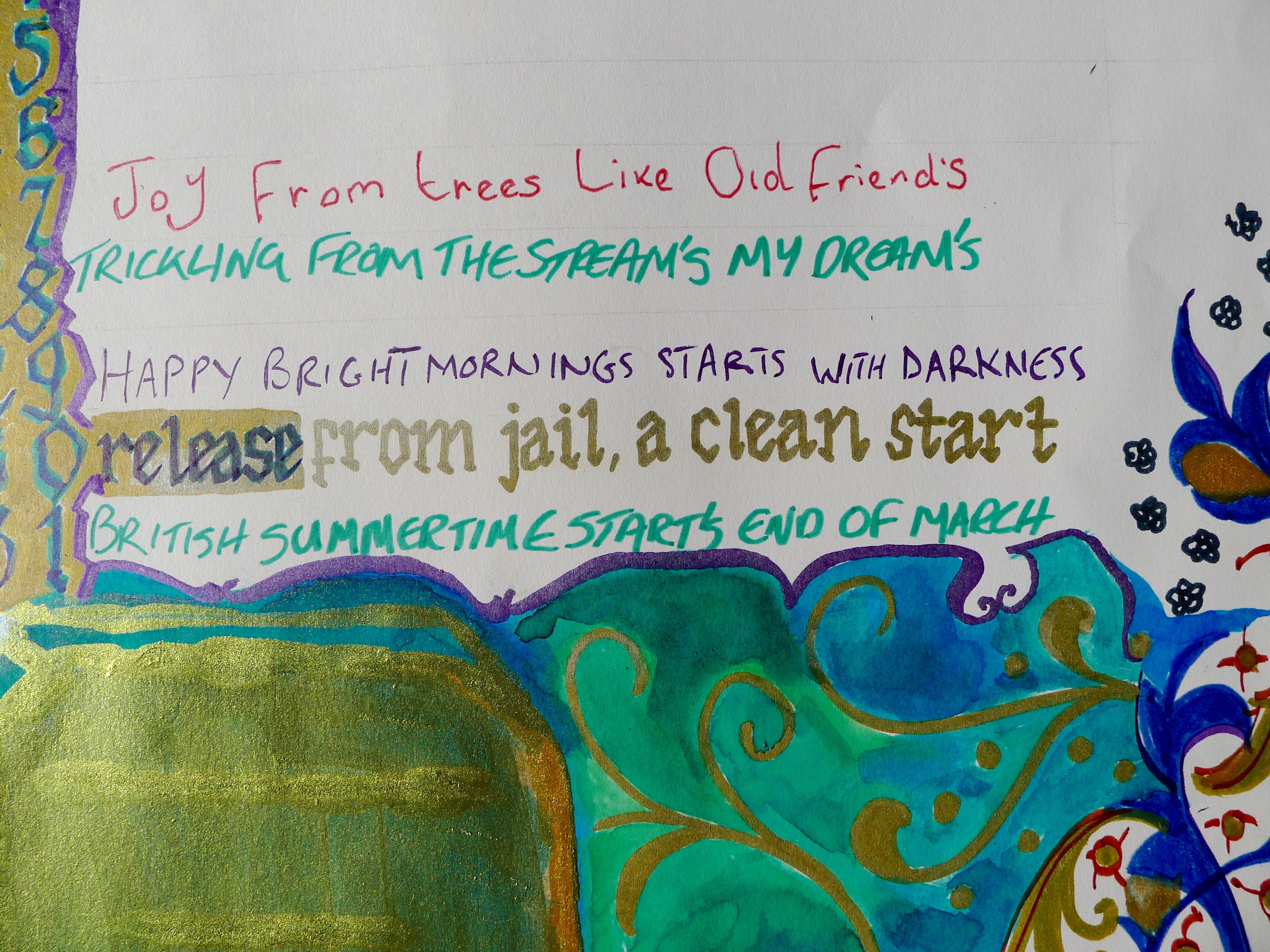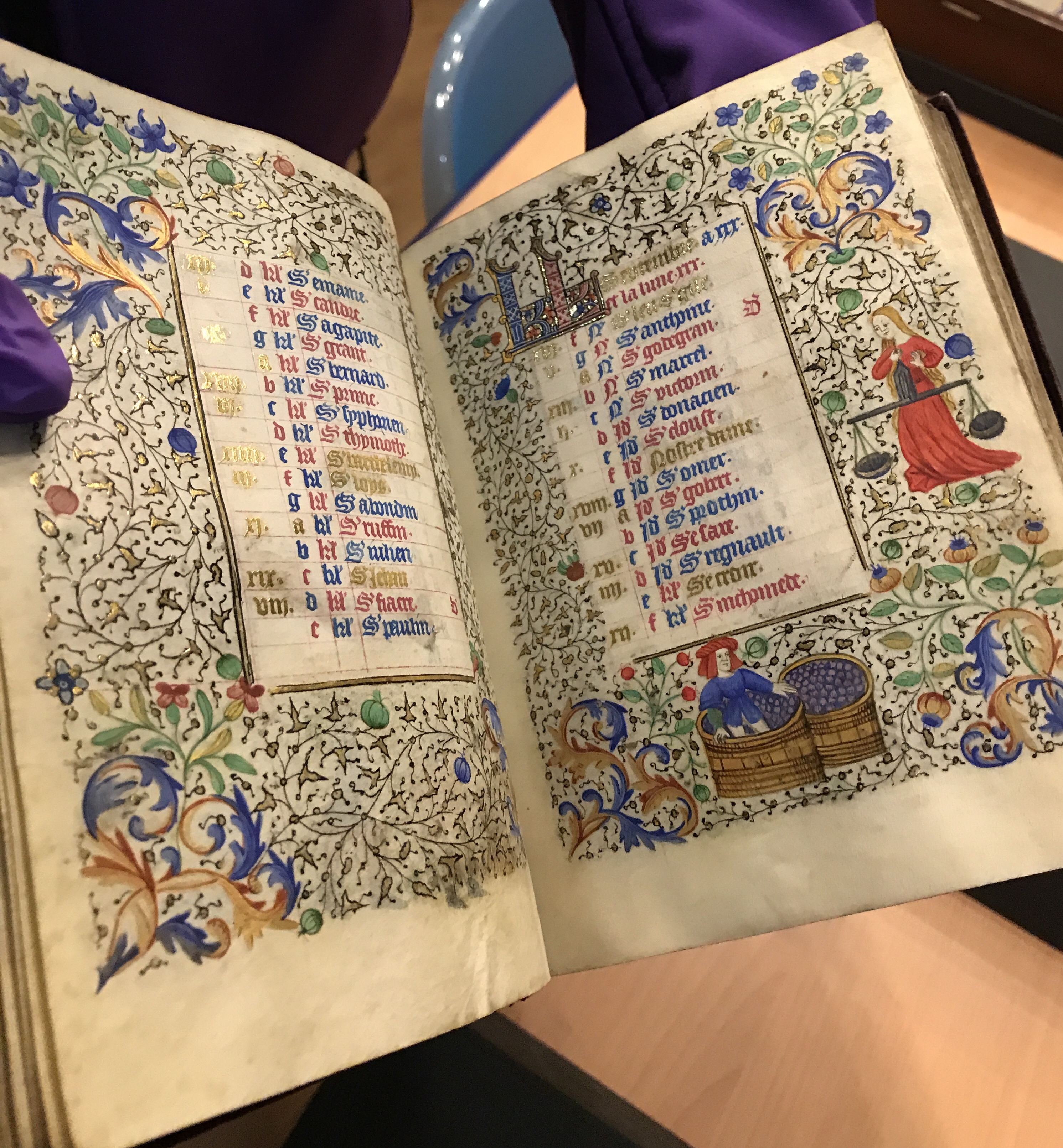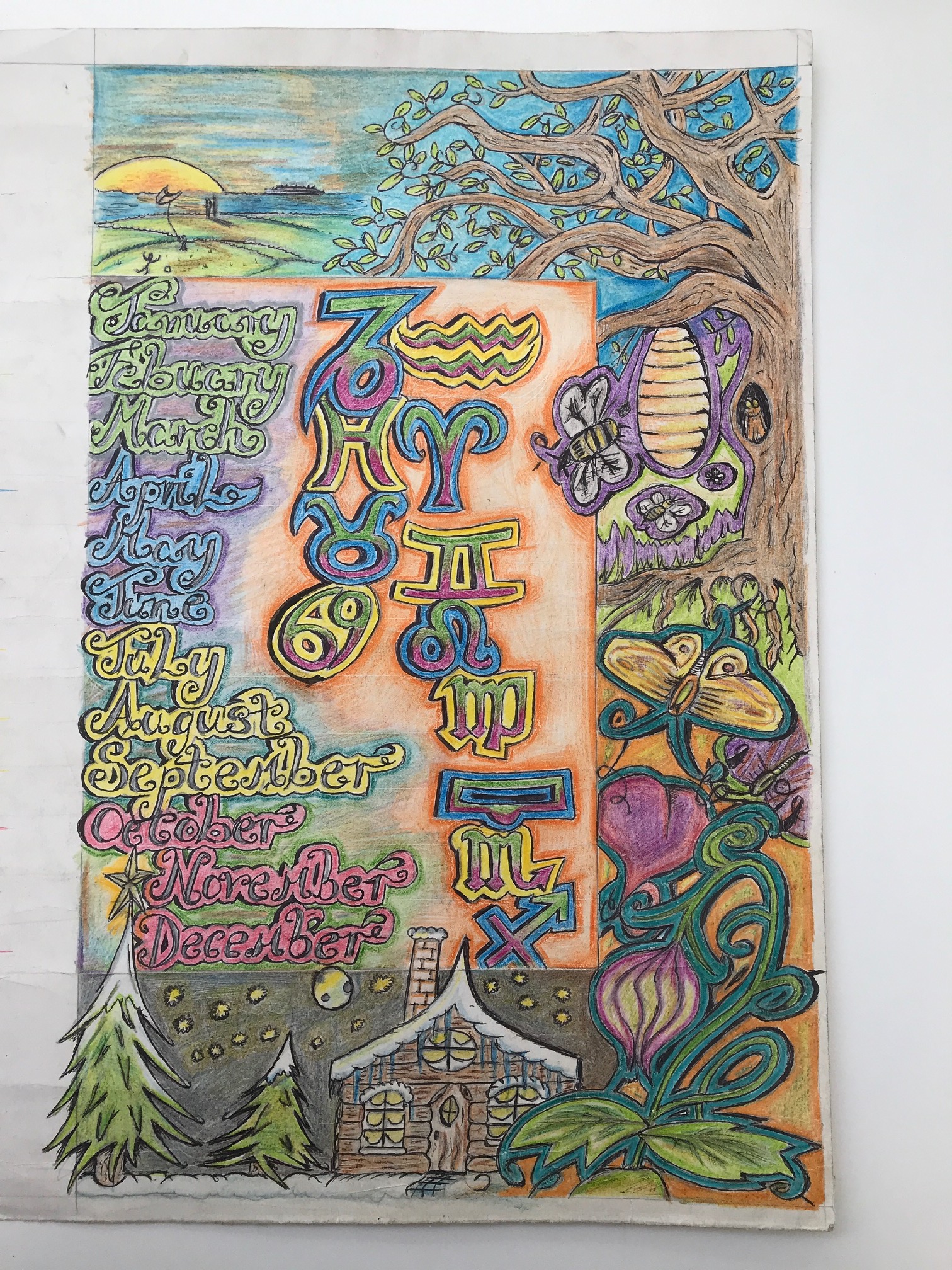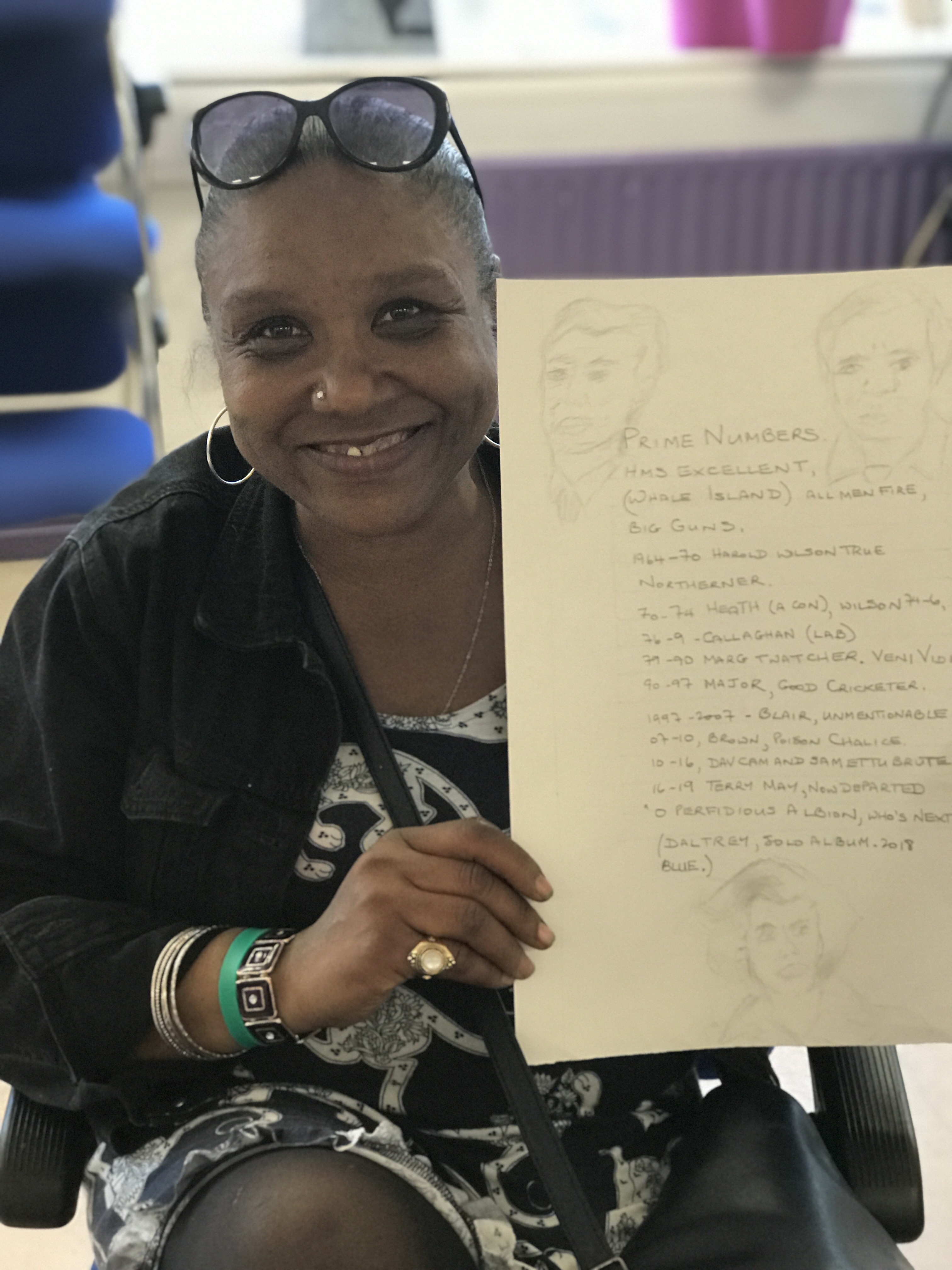When my brothers and sister and myself were little, mum would sit us round the kitchen table with bits of cardboard and paper and paints. We’d splash away together, making pictures, or building space rockets. It was her method of crowd control, it stopped us from arguing and getting into mischief. Mum would be there keeping an eye on us, while making the tea.
They were some of the happiest times I ever experienced; a feeling of purpose and a feeling of belonging.
That memory flashed into my mind during the ICM workshop I was invited to last week. They’re a group of artists who hook up together every week to be in each other’s company while they create artworks. At the moment they meet on Zoom, because of the Covid restrictions.
The group was led by Dylan, who suggested swans as this week’s theme. (It’s important to know that Back on Track and ICM are based in the wonderful Swan Building, in Manchester.) While people drew swans, they chatted in a gently distracted way and I wrote down the sentences that jumped out, arranging the words into a poem. It was a wonderfully peaceful way of working together, full of little anecdotes and jokes and all the while the drawings came alive on paper.

Maybe because my own recollection of childhood was sparked, I particularly noticed people’s stories of their childhood — their encounters with swans, geese, and of course the ugly duckling story. Somehow the poem reflects the journey of the ugly duck, the journey we all make forward from childhood, trying to reach our full potential.
After the poem was written and read back, Dylan was kind enough to make it into a visual poem of a swan, which you can see above. What you can’t see, but can only imagine, is the sweet-natured atmosphere of this group, who welcomed me into their little gang and for a while treated me as one of the family, while they made art together.

Several organisations work together to support the art group:
Inspiring Change Manchester is a Lottery Funded Learning Programme. We work with people experiencing Multiple Disadvantages, who face barriers to accessing support and may be isolated within society. We follow a No Wrong Door approach, supporting people through a Multi-Agency Partnership that strives to be Asset Focused, Psychologically Informed and Person Centred. We are working to create System Change to tackle inequalities and improve people’s experiences in accessing the support they need.
Dylan Gwylim represented Self Help Services who are the partner providing the mental health element of the ICM project https://www.selfhelpservices.org.uk/
Paul Crudgington represented Back on Track www.backontrackmanchester.org.uk Several Back on Track learners have been involved with WHISPER TO ME ALONE.
MASH is a charity providing a range of confidential and non-judgemental services to women working in the sex industry in Greater Manchester.
The arthur+martha project WHISPER TO ME ALONE gathers words and art from people who have experienced homelessness — and the experiences of other vulnerable people in Manchester during lockdown. The project centres on journals of writing, art and song lyrics.





